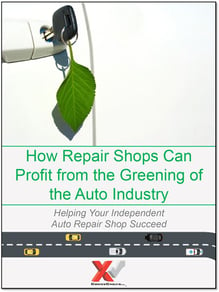 Here’s a good reason to sit back and relax: Americans are still driving the oldest fleet of cars in history, with an average age of over a decade, so there’s plenty of good old-fashioned auto repair work to do.
Here’s a good reason to sit back and relax: Americans are still driving the oldest fleet of cars in history, with an average age of over a decade, so there’s plenty of good old-fashioned auto repair work to do.
Here’s an even better reason to jump into high gear and take-on new technologies: Global auto makers have universally determined that the future of transportation won’t be powered by gas.
They’ll still be building gasoline powered cars for years, and as we’ve seen since the price of gas began falling late last year, much of the public still chooses its powertrain based entirely upon a cost analysis.
But government mandates and incentives designed to protect the environment, and the consumer/voter demand that led the politicians to create them, indicate that alternative powertrains will become a bigger and bigger part of the auto industry for the foreseeable future.
Mandates to increase the overall mileage an OEM’s fleet delivers led to the development of hybrid powertrains in the first place, and they’ve become an expected part of the current product mix. There are two basic kinds: the classic Toyota Prius-type hybrid where the electric and gasoline motors both drive the car; or the Cadillac ELR plug-in hybrid type, where the electric motor always drives the wheels while the gasoline motor charges its battery.
And incentives support the all-electric vehicle industry. The Federal government kicks in a $7,500 tax credit and many states add to it, with California, for example, providing an additional $2,500 in the form of a rebate.
As electrics continue to drop in price and improve in size and quality, they become more and more competitive. Environmental incentives drop the price below the MSRP, and fueling the vehicle with electricity costs pennies on the dollar compared to gasoline, dramatically reducing the cost of ownership. “Range anxiety,” another consideration that dampened consumer uptake of all-electrics, has also become less onerous as ranges have lengthened and as recharging stations have become more common.
Auto body and repair shops that embrace this new technology and let their communities know that they’re ready to compete for this business stand to maintain their profitability for the long-term.
For more insights into how successful shops are adapting and profiting, please see our latest e-book, How Repair Shops Can Profit from the Greening of the Auto Industry.
And for an overview of just how committed OEMs are to these technologies, here’s a tour of what’s out there now and what’s coming soon:
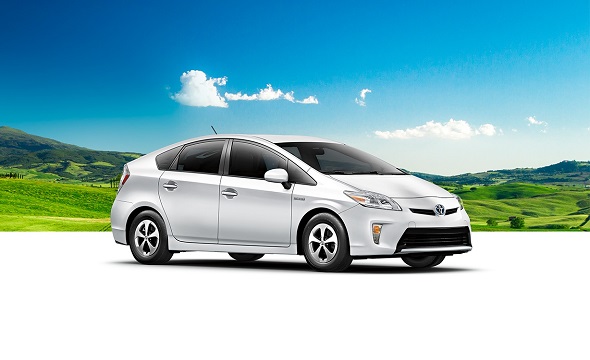
The hybrid that took alternative powertrains mainstream remains one of the strongest sellers worldwide.
You’ll be servicing them long after their warranties expire; according to Toyota, 95% of all Prius sold in the last 10 years are still on the road.
Since it’s a gasoline powered car, it’s rated with the familiar “MPG,” getting 51 in the city and 48 on the highway. With such a low cost for fueling it, its $24,200 starting MSRP makes it a fierce competitor in the mid-sized market.
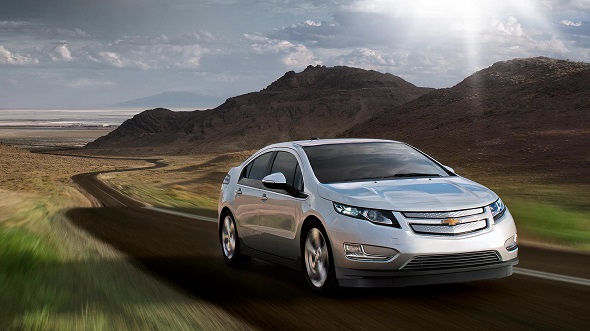
Chevrolet’s entry into the plug-in market couldn’t have fared better, as the Volt has the highest customer satisfaction rating of any car. Like the Prius, the electric motor can drive the car thirty-nine miles before the onboard gasoline engine takes over propulsion, meaning it could be driven daily as a pure electric. And it’s priced to compete with the Prius as well, starting with an MSRP of $26,495.
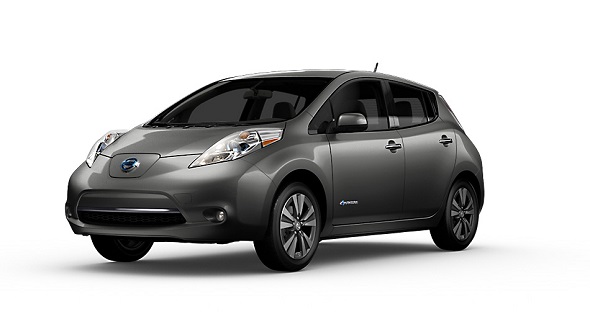
Fisker, Karma and Tesla all beat Nissan to market with true electric cars, but only Tesla managed to survive – and they did it with extreme engineering and equally extreme entry-level pricing.
Then Nissan changed all the rules with the first all-electric for consumers. It gets “126/101 MPGe city/hwy,” where “MPGe” equals the distance an electric car can cover on the amount of energy contained in one gallon of gasoline. It’s the sort of measure the government would come up with, and it’s designed to give the consumer a point of comparison with gasoline powered cars.
Here’s what really matters: It has a 24 kWh battery, and it can go about eighty-five miles on a single charge. And since things like the tire’s rolling coefficient can really impact distance, the next model comes with a “Tire Pressure Monitoring System” that alerts you when a tire needs attention, and even beeps the horn once you’ve filled it to the correct pressure.
According to the Federal Highway Administration, the average American drives about 41 miles a day, so the car’s range will cover daily use almost all the time. Not only is cost of ownership a small fraction of what it would be for a similar gasoline powered car, with an MSRP as low as $21,510,and with up to $10,000 in incentives to buy it, it almost becomes a category unto itself.
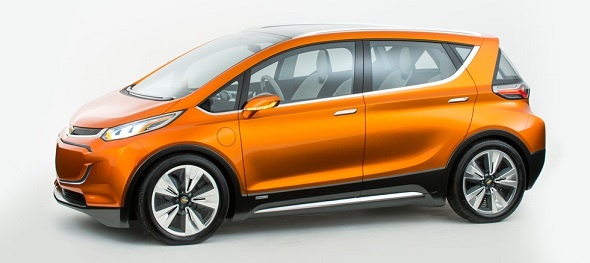
Chevrolet has no intention of leaving Nissan’s challenge unanswered. They introduced the Bolt concept car last year, and the response was so positively overwhelming they put it into production. Due out next year, it will have an estimated range of over 200 miles and, hopefully, customer satisfaction ratings to challenge those of the Volt.
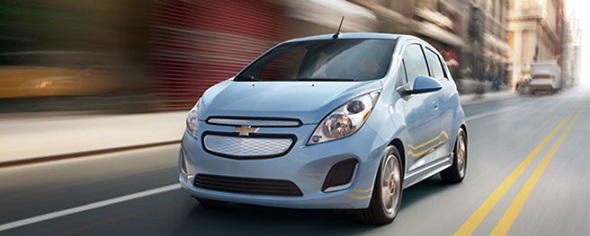
It’s possible that Chevrolet has focused upon the Bolt’s enhanced range because its existing Leaf-cutter, the all-electric Spark, outperformed the Leaf in IIHS safety tests but still didn’t become a market favorite. Apparently the safety difference wasn’t enough to justify the $25,170 MSRP. Maybe range will.
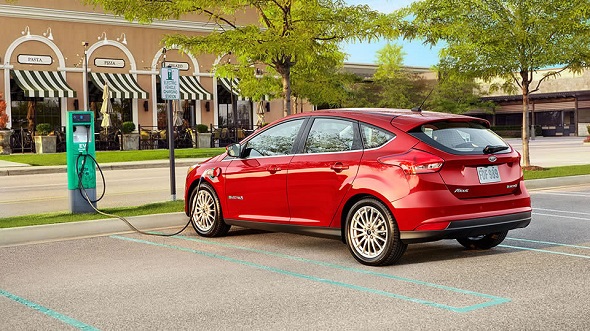
Ford also beat the Bolt to market with its all-electric Focus.
But with an MSRP of $29,170 – about $8,000 more than the Leaf – and only the same range and basic features as the cheaper Nissan, it didn’t capture the market’s imagination either.
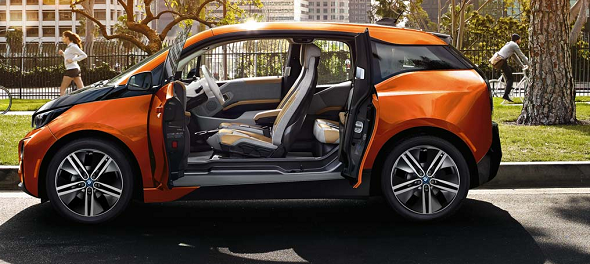
Designed through-and-through to optimize its powertrain, BMW’s i3 has a “range extender” option that lets it cover 150 miles on a full charge.
And it has a great rumor-within-a-rumor surrounding it: when Tim Cook and other Apple executives toured the plant they might have been talking to BMW about incorporating some of the i3’s technology into the electric car (or minivan) that Apple is rumored to be developing.
Rumors aside, the car’s gotten rave reviews, even with a base MSRP of $42,400 -- $46,250 with the range extender.

Cadillac didn’t get the same courtesy regarding the price of its glamorous first attempt at a plug-in hybrid, mostly because the front-end chassis is identical to that of the Chevrolet Volt.
It has the Volt’s 39-mile all-electric range, meaning it can function as a full-blown electric for most day-to-day purposes, dramatically reducing its cost of ownership.
But industry analysts questioned if a luxurious Volt was worth the $65,000 MSRP – more than twice as much.
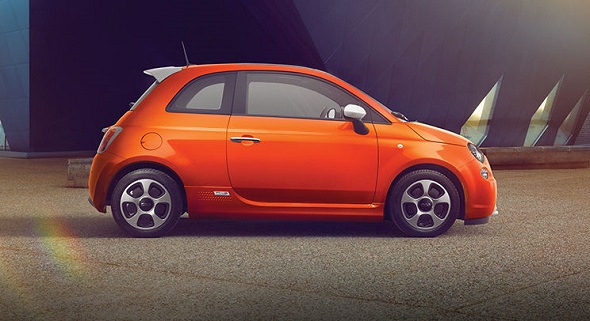
A pure electric priced directly between the Leaf and the i3, with an MSRP of $31,800, Fiat makes what may be the industry’s most creative environmental statement:
Ugliness is the Worst Form of Pollution
Certainly eye-catching and bound to appeal to a certain type of Millennial, the 500e’s site was one of only two we reviewed that didn’t state the car’s range up front.
However, it has a 24 kWh battery and the EPA determined it would require 29 kWh to go 100 miles, so the battery should deliver something like the Leaf’s 80 mile range.
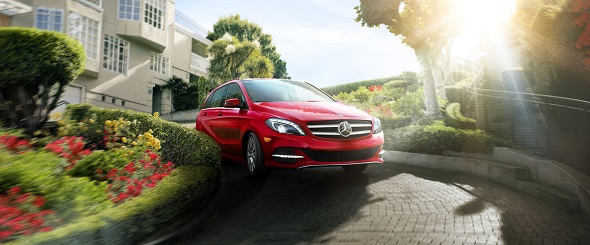
Mercedes is quick to point out that it built its first electric car in 1906, and so it naturally feels at home manufacturing a direct competitor to BMW and Tesla. The B-Class all-electric has an 87-mile range and a mid-range MSRP of $41,450.
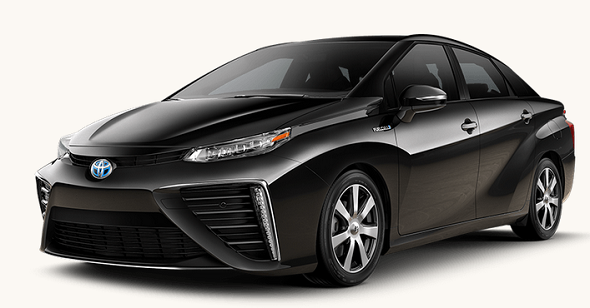
Given Toyota’s success with the Prius, and the fact that they sold their Fremont, California factory to Tesla in what industry analysts considered a pretty cozy deal, it’s critical to note that one of the world’s greatest and most innovative car companies does not see a future for battery powered cars.
Instead, they’ve built an all-electric car based upon hydrogen fuel stack technology.
Whereas batteries cause range-anxiety, tanks of hydrogen gas tend to create explosion-anxiety, despite the fact the gas is actually not as dangerous to handle as commonly believed.
It’s so light most of it floats away instantly. And that horrible photograph of the Hindenburg zeppelin disaster from a hundred years ago does not show hydrogen burning. By the time the photo was taken, most of the hydrogen was long gone. It’s the oil-based lacquer used to windproof the fabric shell that’s burning. How can you tell? Because there’s smoke – lots of it.
Burning hydrogen doesn’t make smoke – it makes water, which is one of the Mirai’s main selling points.
Toyota even dug into its corporate history to calm market fears about the onboard hydrogen tanks:
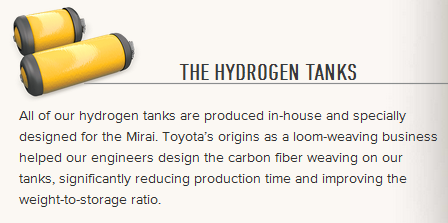
The Mirai will have the same motor as used in the Lexus hybrid, and Toyota is committed to creating a refueling infrastructure similar to the supercharging stations Tesla has installed globally. Commercial production begins next year, and there are already test Mirai’s on the road.
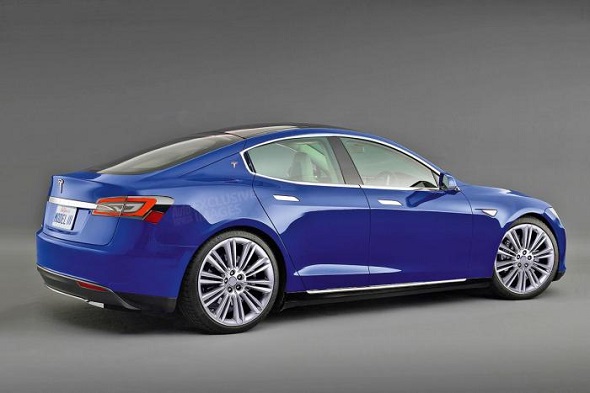
Tesla generates more media buzz than any other alternative powertrain manufacturer. It doesn’t release monthly sales figures, so gallons of ink are spilled trying to estimate what they are.
The company has grand plans, and two upcoming models have the potential to change the game completely.
The first is the Model 3, which will be about 20% smaller than the Model S currently available. It may have a 300-mile range.
And it will cost half as much. Due out in two years, with a product launch expected next March, industry analysts expect the car to sell for around $35,000.
Comparing that to the Fiat, BMW and other prices above, one would expect a major disruption if this happens.
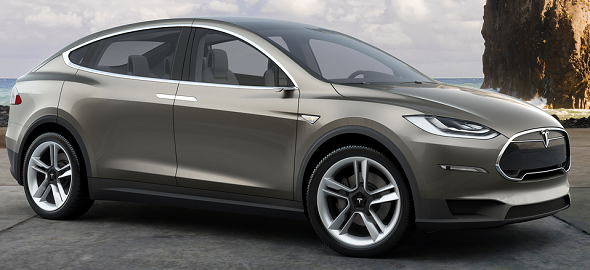
The second one is the Model X, which will begin shipping before year’s end.
Crossovers are by far the most popular type of car in the country right now, and the Model X will be the first full-sized one that’s all-electric.
It’s worth noting just how far advanced the current Model S sedan is when considering how the Model X might impact demand.
You certainly heard about how “Insane” acceleration mode was downloaded into existing cars wirelessly.
But that only scratches the surface of what it’s like to own a computer-driven car. Tesla already offers an “autopilot” that will change lanes for you and slow or even stop in an emergency. The same 360 radar and sonar that make that possible also keep track of pedestrians and anything else around you. It will detect a parking spot and park itself – and if you live on private property, it will pull itself out of your garage and wait for you by your door.
You can already get a model that has a 295-mile range, and if these features are all included in the Model X, at the expected $70,000 price, it’s highly likely that the companies mentioned above will scramble to create competing models.
No matter which cars seem the most interesting or most promising to you, one thing is clear: they will become a bigger and bigger portion of American’s fleet over the course of the coming years. Positioning yourself early to offer service may be the most important business development you can do this year and next.
Learn more in our free eBook, How Repair Shops Can Profit from the Greening of the Auto Industry.



